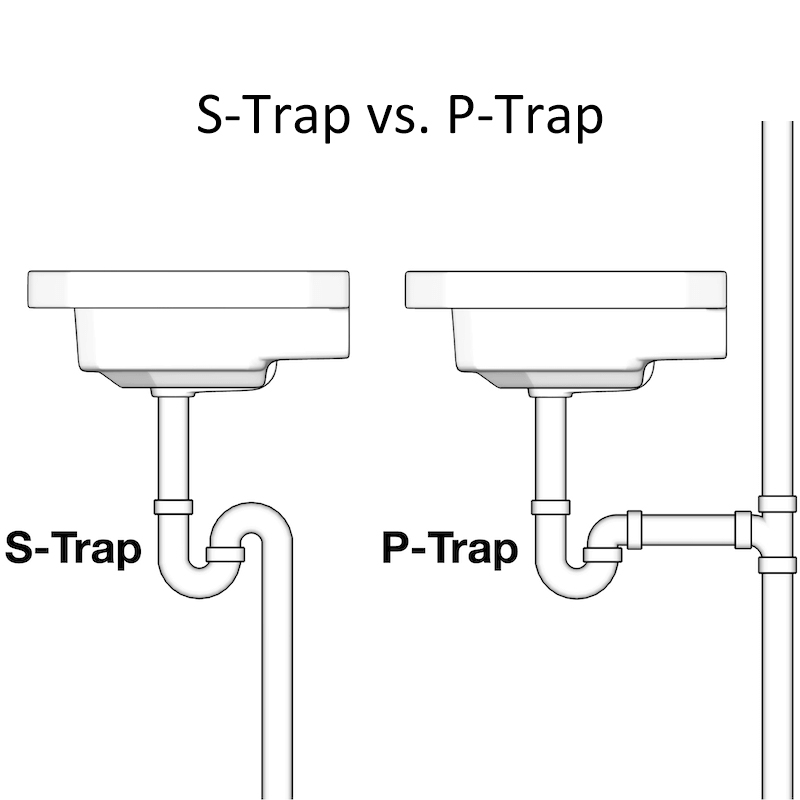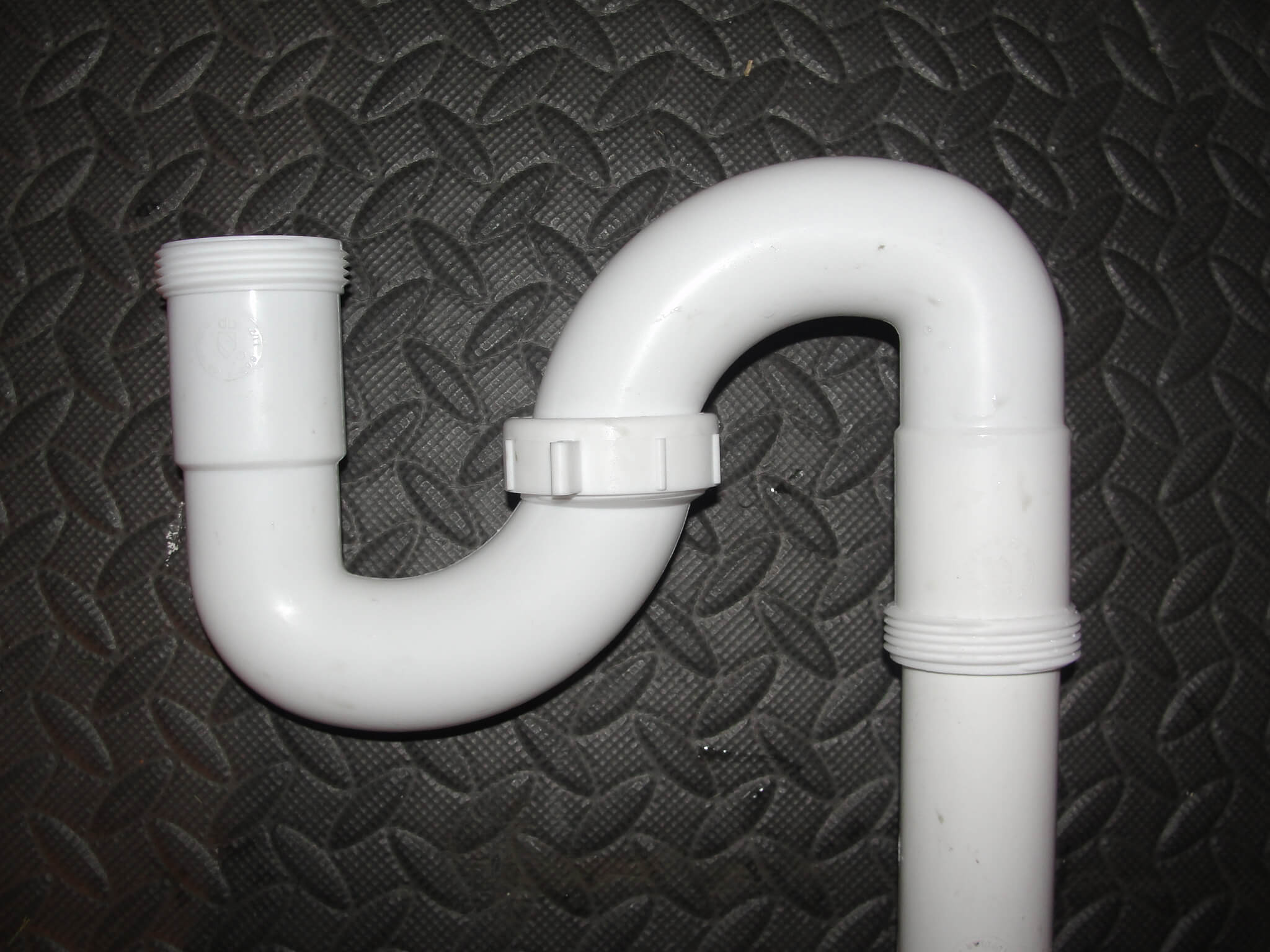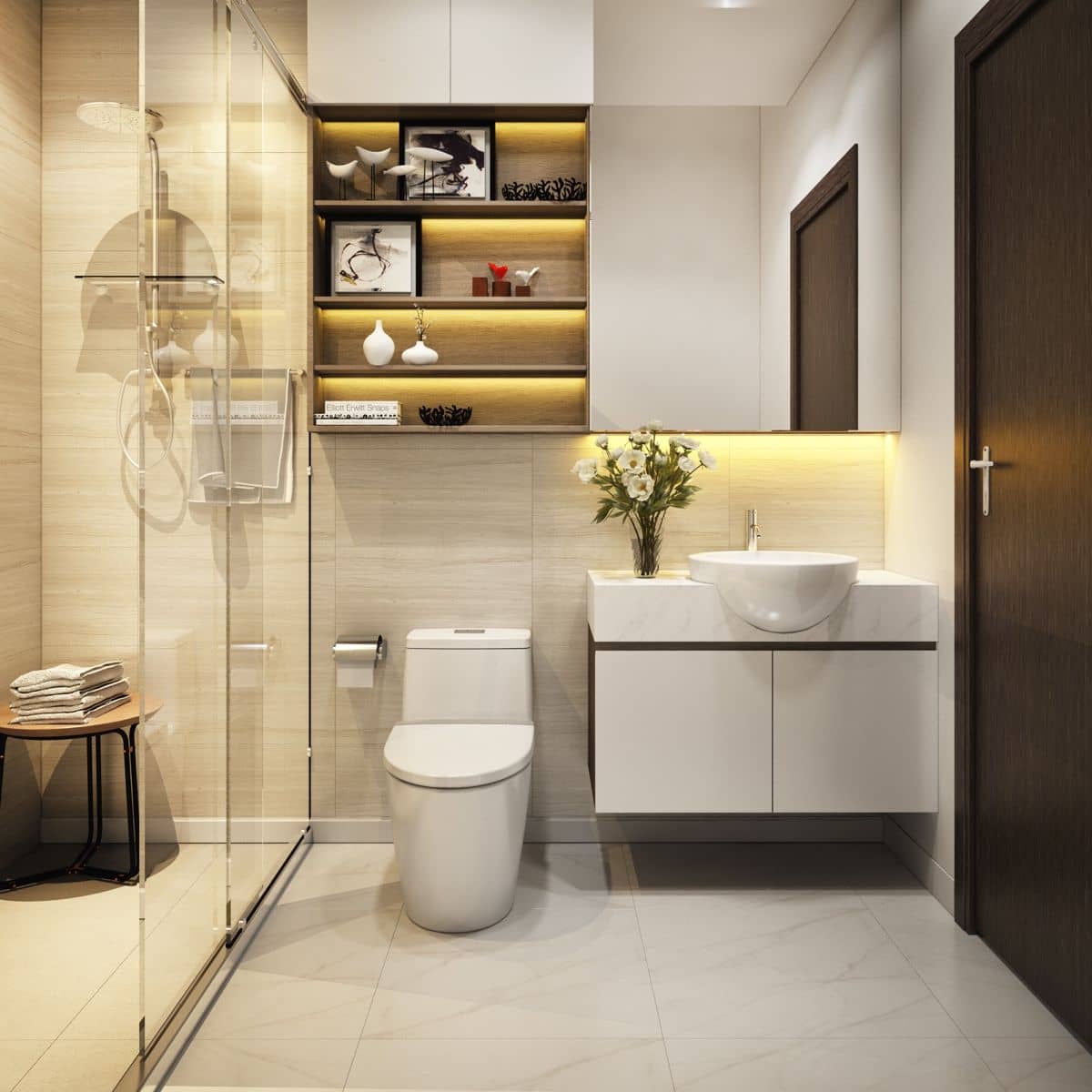 English
English
Jabra Sanitary is a sanitaryware supplier offering toilets, sinks, faucets, bathtubs, etc., at competitive prices. If you're a distributor, wholesaler, or project contractor, get a quote today!
 $23.9 Limited-time Offer
$23.9 Limited-time Offer Consignment Policy
Consignment Policy 20 Years of Experience
20 Years of Experience
When it comes to plumbing, particularly in the installation of toilets, understanding the difference between an S-trap and a P-trap is essential.
Both serve to prevent sewer gases from entering your home, but they are designed for different configurations and have distinct applications.
This guide will explore the key differences between S-traps and P-traps, their uses, and how to choose the right one for your needs.

Table of Contents
What Does a Plumbing Trap Do?
What is an S Trap
What is P Trap
S Trap vs P Trap
S Trap vs P Trap Difference Chart
S-Trap vs P-Trap Toilet
Choosing the Right Trap for Your Plumbing Needs
Converting S Trap to P Trap
What Are the Risks Associated with P-Traps and S-Traps?
Conclusion
A trap in plumbing is important for keeping things clean and stopping bad smells. It is placed under a sink, toilet, or other fixture.
Key Functions of a Trap
- Seal Pipe Systems: The trap creates a water seal that blocks sewer gases from entering the living space. The water kept in the trap is called the "trap seal."
- Catch Debris: It catches small debris and prevents it from clogging the plumbing system. This helps in maintaining free-flowing drains.
- Provide Proper Ventilation: Traps work with the ventilation system, allowing air to flow through the pipes. This helps maintain atmospheric pressure in the drainage system.
Understanding the role of traps helps to keep your home's plumbing system in top condition.
An S-trap is a kind of plumbing trap that has a unique "S" shape. This shape lets the trap connect directly to a floor drain.
Many older homes still use S-Traps because they work well for specific plumbing setups.

Why S-Traps Are Important
S-Traps create a seal by holding some water in the curved part of the pipe. This water seal prevents sewer gases from entering the home.
Installation and Use
S-Trap toilets are often easier to install in ground-floor bathrooms. The straight pipe connects directly to the waste pipe below the floor.
This makes it a simple and practical choice for homes without complex plumbing needs.
S-Trap: Pros and Cons
Pros
- Straightforward installation: Ideal for toilets on the ground floor.
- Effective at blocking sewer gas: The water seal works effectively.
Cons
- Less common in modern plumbing: Newer designs often prefer P-Traps.
- Potential for drying out: If not used often, the water seal can evaporate.
- Ventilation Issues: S-traps can sometimes cause siphoning issues, where the water in the trap gets sucked out, allowing sewer gases to escape. This is because they rely solely on gravity without a proper venting system.
What is P Trap
A P-trap is a plumbing trap shaped like the letter "P." It is the most common type of trap found in modern plumbing systems.

Why P-Traps Are Important
The P-trap helps prevent sewer gases from entering living spaces by creating a water seal.
Installation and Use
The "P" shape includes a horizontal section that connects to the wall drain, making it ideal for sinks and toilets connected to wall drainage systems.
It is commonly used in new construction and remodels, where the plumbing is designed to have wall drains. Better for high-rise buildings, upper floors, and wall-mounted fixtures. <Check wall-mounted toilet bowls>
P-Trap: Pros and Cons
Pros
- Ease of Maintenance: P-traps are easier to clean and maintain than other types of traps.
- Versatility: They can be installed in various locations, including bathrooms and kitchens.
- Regulatory Approval: These traps conform to plumbing codes and are favored by professionals.
- Ventilation: P-traps are connected to the plumbing vent system. This helps maintain efficient drainage and prevents suction, which can break the water seal.
- Efficiency and reliability: Unlike S-traps, P-traps are not prone to self-siphonage.
Cons
- Vent Requirement: Requires venting to function efficiently
S Trap vs P Trap
Both P-traps and S-traps are important in plumbing systems. Understanding the difference between P and S traps is crucial for selecting the right plumbing fixture for your home.
Differences by Size
The P-trap and S-trap vary in size mainly due to their design. P-traps are typically smaller and more compact, making them suitable for tight spaces.
S-traps take up more vertical space since they include a larger bend below the floor. <Read Wall-hung Toilets vs. Floor-mounted Toilets>
Differences by Material
Both traps are commonly made from PVC, ABS, or cast iron. P-traps often come in PVC for residential use due to their lightweight and corrosion-resistant properties.
S-traps can also be found in these materials but are sometimes made of heavier metals for durability in older buildings.
Plumbing Code Standards
P-traps are the standard in most modern plumbing codes. They are preferred due to their efficiency and better venting capabilities.
S-traps are often banned or restricted in many regions because they can lose the water seal, potentially allowing sewer gases to enter the home.
Suitable Setup
P-traps are ideal for sinks and toilets situated on higher floors since they connect horizontally to the drain.
S-traps are often used in ground floor installations where the drain pipe runs vertically into the floor. However, their use is now limited due to stringent plumbing codes.

Design Advantage
A P-trap features a horizontal exit pipe, which provides easy access for maintenance and cleaning. This design also helps retain water more effectively, ensuring a constant barrier against sewer gases.
An S-trap has a vertical exit pipe, making it suitable for older homes but less convenient for modern plumbing needs.
Efficiency
P-traps are more efficient compared to S-traps. This is because of their better venting, which prevents the trap from losing its water seal.
S-traps, lacking proper venting, can siphon out the water seal, diminishing their efficiency and effectiveness.
Backflow Prevention
P-traps excel in preventing backflow due to their effective water seal and venting system.
S-traps, on the other hand, can suffer from siphoning, which can lead to backflow issues.
Consequently, P-traps are generally considered more reliable for preventing odors and gases from entering living spaces.
S Trap vs P Trap Difference Chart
When comparing S traps and P traps, it's important to look at their design, efficiency, and application. Below is a clear difference chart to help understand these two plumbing traps.
Feature |
S Trap |
P Trap |
|---|---|---|
Shape |
S-shaped design |
P-shaped design |
Efficiency |
Prone to siphoning and drying out |
More efficient with plumbing vents |
Common Use |
Often used in ground floor installations |
Used in higher floors, newer kitchens, and bathrooms |
Ventilation |
Generally lacks proper venting |
Better venting, connected to plumbing vents |
Code Approval |
Often banned due to inefficiency and potential issues |
Approved by plumbing codes |
Installation Complexity |
Easier to install due to simpler design |
Slightly complex due to the need for vented connections |
Prevalence |
Less common in modern construction |
More common and preferred in modern construction practices |
S-Trap vs P-Trap Toilet

When comparing an S-trap vs P-trap toilet, the main difference lies in their connection to the drain system:
- S-Trap Toilet: Best for setups where the waste outlet goes directly into the floor. They are common in older homes.
- P-Trap Toilet: Suitable for bathrooms where the waste pipe runs horizontally to a wall drain. These are more common in modern homes due to better ventilation and less risk of siphoning.
Note: Pit Distances for Toilets
When installing toilets, the distance from the wall to the center of the waste pipe (referred to as the pit distance) is crucial. The common pit distances are:
- 180mm (7 inches)
- 300mm (12 inches)
- 400mm (16 inches)
Ensuring you choose a toilet that matches the pit distance of your existing plumbing will save you from costly modifications.

Choosing the Right Trap for Your Plumbing Needs
Choosing between an S-trap and a P-trap depends on your existing plumbing setup and local building codes. Here are some considerations:
Considerations:
- Existing Plumbing: If your drain system is floor-based, an S-trap might be necessary unless you plan a major renovation. If your drainage runs through the walls, a P-trap is likely the better choice.
- Location: If the toilet is wall-mounted or on an upper floor, a P-trap is more suitable.
- Local Plumbing Codes: Check local building codes as some areas have restrictions on the use of S-traps due to siphoning issues.
- Ventilation Needs: If you have the option, a P-trap is generally preferable because of its better compatibility with venting systems, reducing the likelihood of sewer gas problems.
- Installation: P-traps are more versatile and easier to maintain.
For most modern homes, the P-trap is the clear choice.
Converting S Trap to P Trap
Converting S Trap to P Trap can improve the efficiency and code compliance of a plumbing system.
The main difference between the two is the shape and their venting capabilities.
Materials Needed:
- PVC P-trap kit
- Hacksaw
- PVC glue
- Pipe wrench
- Measuring tape

Steps to replace s trap with p trap:
- Turn off the water supply to the toilet.
- Remove the toilet by loosening the bolts and lifting it off the flange.
Remove the S-trap:
- Cut the S-trap pipe using the hacksaw.
- Remove the remaining pipe sections and clean the area.
Install the P-trap:
- Measure the distance from the floor drain to the waste pipe.
- Cut the new P-trap pipe to fit this distance.
- Dry fit the P-trap to ensure proper alignment.
Secure the P-trap:
- Apply PVC glue to the pipe ends.
- Attach the P-trap to the waste pipe and floor drain, making sure it's properly aligned.
- Tighten any connections using the pipe wrench.
Finalize the Installation:
- Reinstall the toilet by placing it back onto the flange and securing the bolts.
- Turn on the water supply and check for leaks.
Tips:
- Ensure proper venting to prevent sewer gas from entering the home.
- Regular maintenance helps keep the P-trap functioning efficiently.
What Are the Risks Associated with P-Traps and S-Traps?
Both P-traps and S-traps are essential for plumbing, ensuring smooth drainage and odor control.
However, each design has its own set of risks that can impact its effectiveness and safety.
Loss of Water Seal
P-traps and S-traps can lose their water seal, which is vital to blocking sewer gases from entering your bathroom. This happens when water in the trap evaporates, often due to infrequent use.
A dry trap allows unpleasant odors and dangerous gases to seep into living spaces.
Moreover, fast-draining water from other fixtures can siphon the water out of both P-traps and S-traps. While this is more common in S-traps, it still poses a potential issue for P-traps.
Regular use and occasional pouring of water can help maintain the seal, but it’s a risk that requires attention.
Airlock and Gurgling
Another risk is the occurrence of airlock or gurgling sounds. S-traps, due to their design, are more prone to creating airlocks, which block the airflow needed for proper drainage.
This can lead to sluggish drains and gurgling noises, signaling improper venting or a blocked vent pipe.
P-traps, on the other hand, are less likely to cause airlocks but can still experience gurgling if there is a venting issue. In both cases, these sounds indicate potential plumbing problems that, if ignored, could lead to more severe issues.
Regular maintenance and proper venting can mitigate these risks.
By understanding these risks and taking simple preventive measures, you can ensure that your plumbing system remains both effective and safe.
Conclusion
The S trap design can easily lead to siphoning, which makes it less efficient. On the other hand, the P trap is known for its better performance because it connects to plumbing vents and works more efficiently.
In the past, S traps were commonly used in early construction or for specific ground-floor setups. Today, P traps are preferred because they are more reliable and meet building codes.
For those deciding between an S-trap and a P-trap toilet, it is crucial to consider the specific needs of the installation site. <See tankless toilet install issues>
An S-trap toilet is a solid choice when plumbing runs below the floor. If not, a P-trap might be preferable due to its wall-exit configuration.





















